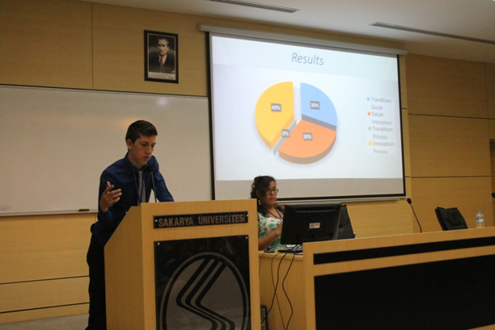Thursday morning starts with the presentation from Romania. The aim of the presentation was to show how important is to acquire the civic competence in order to adapt to challenges posed by a United Europe. We also present two examples of good practices when it comes to young people’s active participation in society and volunteering.
In this presentation, we have decided to tackle the subject of the European citizenship education from an interdisciplinary perspective and to present how pupils/students can be actively involved in the life of the European Union. Therefore, in the first part of this presentation we analyse major issues concerning education and the contemporary world issues.
We also present the projects: MASH-Medical Adventure School in Holiday and Collaboration for Equality of Chances in the Multiethnic Cross-border Education and its results concerning the implication of the higher education institutions in Romania and Hungary in the cultural, social, civic development at the national and European level as well as assuming responsibility for the training of future generations of employees.
European higher education issues refer to curriculum, pedagogies, extracurricular activities which may contribute to the European citizenship development.
The European citizenship and the civic competence – synthetic approach wants to show that the idea of active citizenship is closely related to the civic and political education, to the acquisition of the civic competence.
In conclusion, we believe that the civic competence acquisition might represent the best way through which pupils and students can become effective citizens in a United Europe, contributing to the development of the society which prepares them for the world of tomorrow.
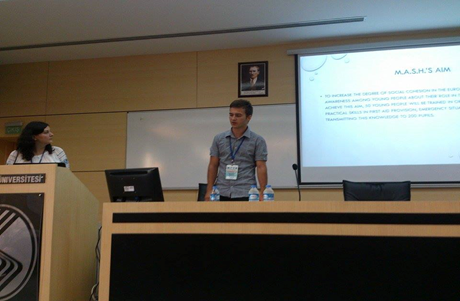
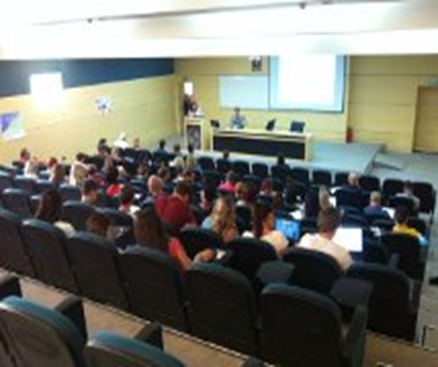
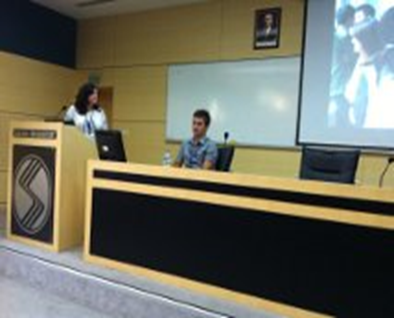
In the second part of the day,it was time for Greece to conduct their workshop.Here is the explanations for the activities carried out during the workshop.
Decision making: From business meetings to theater games
PART 1
1st Activity
The domino effect
Purpose
The main objective of this activity was to break the ice and give the chance to the participants to feel more relaxed and comfortable so as to prepare them for the planned activities workshop.
Description
The activity was initiated with the organizers asking for volunteers among the participants who were then asked to stand in a straight line so as to form a human chain. Then, the person at the front of the line gave certain instructions to the person next to him, who, in turn, gave the very same instructions to the next person in the line. When the instructions reached the last person, then a new round of instructions followed. These instructions asked the participants to repeat a short dialogue and, at the same time, take various positions with their hands and bodies in such a way so that no hand was left free to help the participants keep their balance should something happened. The game came to a close with the person at the head of the line giving a little push to the second in the line which worked like a domino with all the participants founding themselves on the floor laughing along with the audience.
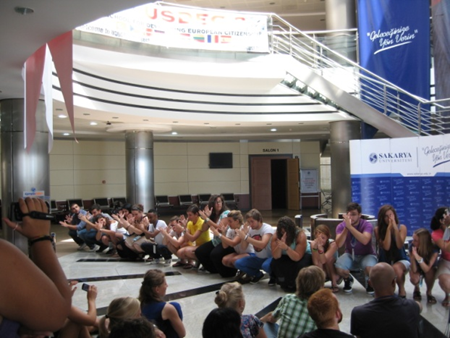
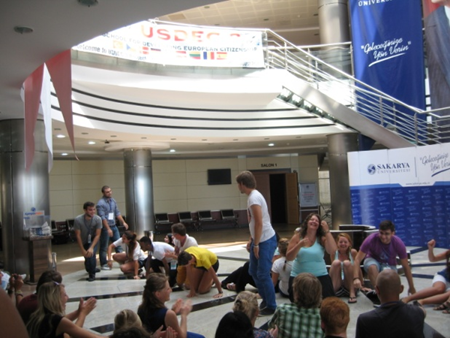
2nd Activity
Taking decisions
Description
The participants were divided into ten groups and were led around an equal number of tables. The members of each group had to belong to a different nationality and one of them was appointed as secretary. Each group was then given a problem which required the participants to suggest and discuss various solutions and reach a unanimous decision in a very short time. When the time was up, the members of each group had to leave and go to another table. Only the secretary stayed in the same table and his/her mission was to explain the problem to the next group of people that joined the table, inform them of the prevailing solution given by the previous group and ask them for further suggestions which, in turn, had to be discussed in order for them to arrive at a new decision. There were three rounds which gave the participants the opportunity to work with as many people as possible.
Purpose
The aim of this activity was to ‘put the theory into practice’ and show how people from different cultural and/or national backgrounds can cooperate and reach decisions.
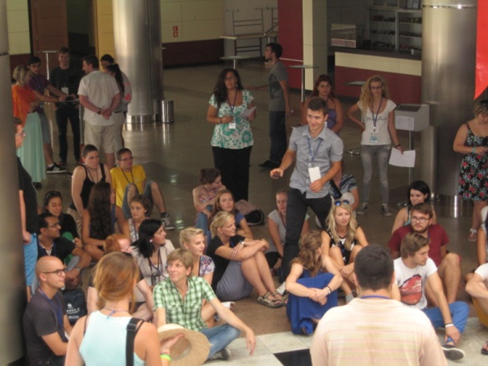
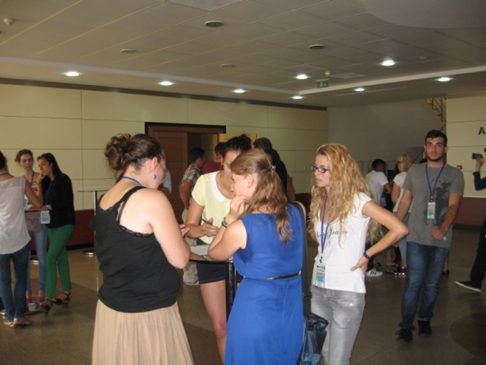
PART 2 (ppt)
Presentation of the Technological Institute of Piraeus
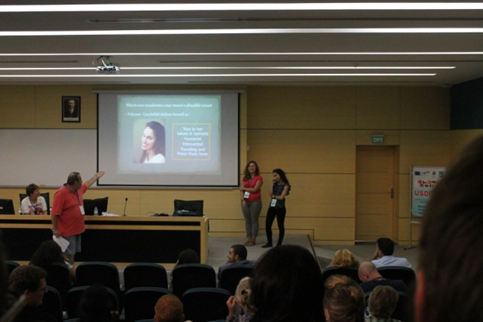
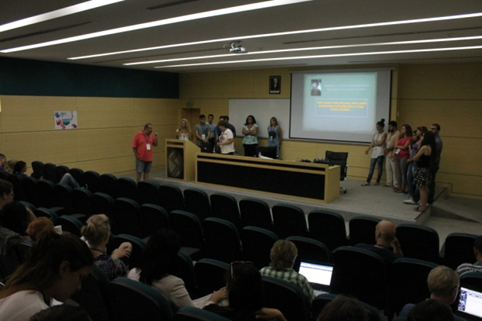
3rd Activity
National characteristics
Description
In the third part of the workshop the members of each country were asked to think and write on a paper which was then distributed 5 things typical of their country. Next, the answers were collected and the names of the countries were erased. Then, the handouts were redistributed in such a manner so that each national group received the answers of a different one. They were then asked to guess the country based on what was written on the paper.
Purpose
The aim of the activity was for the countries that participated to find out the extent to which they knew one another.
4th Activity
Theater game
Description
Each country in turn was given a different situation based on daily life which they had to act out in their mother tongue. No scenario was given to them so they had to improvise their lines. The members of the other countries had to guess what the situation was about.
Purpose
The aim of this activity was to show that when it comes to communication, it is not necessary to know the language of the speakers in order to understand a situation as people can also use body language, facial expressions, gestures and tone of voice to convey meaning.
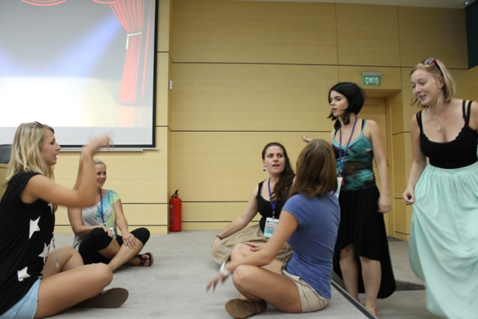
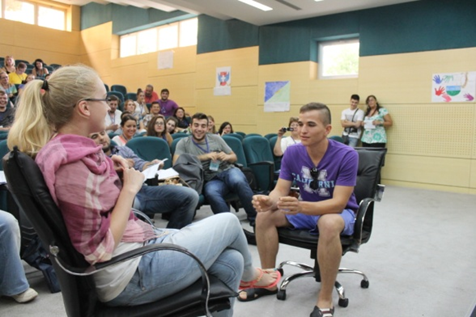
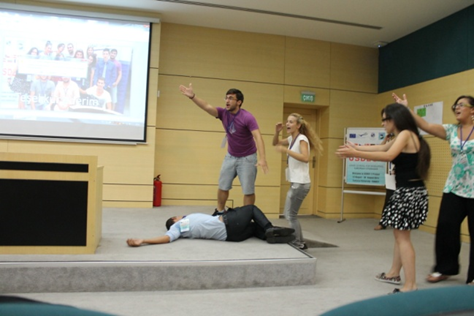
PART 4
Conclusion: Aims and evaluation of activities (USDEC 3.ppt)
